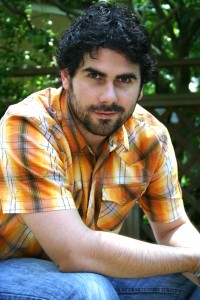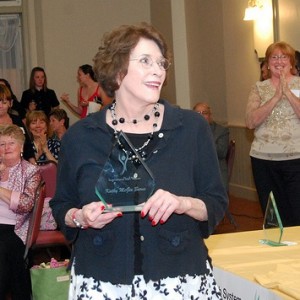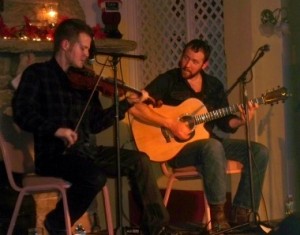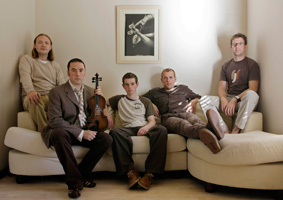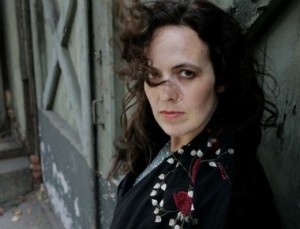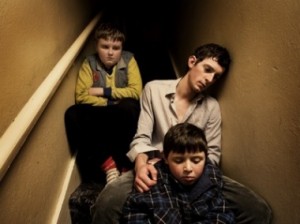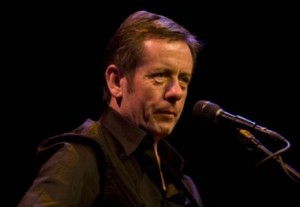Those of us in the know are already well aware that the best tea comes from Cork, and goes by the name “Barry’s,” but Máirtín de Cógáin has discovered during his travels around the U.S. that it’s not always easy to get a proper cuppa. So, he has determinedly set his sights on remedying that by “educating as much of America” as he can with a little story he calls “How to make proper tea!” and wisely including it on his new CD, The Máirtín de Cógáin Project’s “From Cork with Love.”
If anyone can pull off a feat of such cross-cultural magnitude, it’s this two time All Ireland Storytelling Champion.
A true Renaissance man of the arts, Máirtín de Cógáin takes the concept of the triple threat a few threats further: in addition to dancing, acting and singing, he is also a playwright, a songwriter, a bodhrán player and a master seanachie. And with just the slightest of omissions (he‘s saving the dancing for the next CD), those talents are exuberantly displayed on “From Cork with Love.”
The album, recorded live at The Celtic Junction in St. Paul, Minnesota, last April, is a listen with an extremely high addiction factor. There’s no use in even pretending otherwise; from the songs, to the tunes, to the stories—which were all chosen to reflect an aspect of the heart & soul to be found in County Cork—the CD should come with its own repeat button.
The Cork native, who relocated to Minnesota several years ago with his American wife, explained that the album is both a love letter to Cork, and an expression of the love that is to be found there. “It’s the way it is with immigrants, you lose a lot when you leave home. This is my tribute to songs that have been lost, as well as to songs that haven’t been lost.”
“There is a lot of coyness and romance about Cork. I met my wife Mitra there. She’s from Los Angeles, and had come to do a wee year abroad in a foreign land…and you couldn’t be more foreign from Los Angeles than when you’re in Cork.
“I won her heart with a brush dance. After that, she was putty in my hands. And, most importantly, she had all the ingredients for a proper cup of tea, including the Barry’s tea bags.”
Some signs are not meant to be ignored.
“I grew up in a house where there was always a pot of tea brewing. There would be 4, 5, 6 or 10 people drinking from it. Lots of tea leaves. I don’t branch out much from Barry’s, but Lyons isn’t too bad. And then you have PG Tips and Red Lion, as well.”
But it’s not always about tea. After graduation from university, de Cógáin traveled around the world. “I was totally defunct of ideas about my future…like most of my fellow graduates. I always stuck in everything in college.”
It was while in New Zealand that de Cógáin did his first paying gig, and from there it was on to Australia. Upon his return to Ireland, de Cógáin found work for his multifarious talents in acting (the film “The Wind That Shakes the Barley” for which he also sang the theme song), playwriting (“De Bogman” in which he also stars, performing 20 characters in under an hour) and performing (he was a founding, and existing, member of The Fuschsia Band and also formed Captain Mackey’s Goatskin & String Band with Jimmy Crowley).
And de Cógáin the storyteller was also honing his skills as a seanachie, a talent that comes from his father, “a great storyteller himself. I really love telling stories when you hit the mark. I do try to have a story or two wherever we go that’s suitable. I was never amazing at school, but my short term memory is amazing. If I hear a story, and retell it the next day, I’ll remember it. I’m kind of like a mockingbird that way. It also helps in acting.”
Now there is the launch of The Máirtín de Cógáin Project and its CD, where he is joined by fellow Minnesotans Brian Miller and Norah Rendell, as well as special guest, fiddle player Nathan Gourley.
“I first met Brian when I was in college, and he came over to study in Ireland. We played together over there, and then on my very first day in Minnesota, I went into Kieran’s Pub in Minneapolis, and Brian was playing there.
“I’ve been chasing Brian for years to perform with him, and I finally caught him. And along with Brian came Norah. They have such a fierce love of Irish music, and they understand the intricacies of how things work. Both of them are very dedicated, and great to work with.”
And, no surprise here: it was in Cork that the now-married Brian and Norah met and fell in love.
The song that set “From Cork With Love” in motion, “Away Down the Marina,” was one that de Cógáin got from his musical partner and fellow Corkman, Jimmy Crowley. A love song with “verve and excitement,” it tells the story of a couple who courted along a walkway called The Marina on the River Lee. It’s a trysting spot not much used today, but perhaps with the release of the album, it will be rediscovered by a new generation of lovers. And, as a tribute to his wife, de Cógáin very sweetly changed a line in the first verse from “My pretty Irish queen” to “My pretty Persian queen.”
It’s these little stories behind the songs that add to the winning appeal of “From Cork With Love.” The oldest song on the CD is “The Star of Sunday’s Well,” which was composed by Cork writer (and lawyer) William B. Guiney and dates to the 1870’s. Introduced to the recording of Donal Maguire’s version by Brian Miller, de Cógáin also counts Jimmy Crowley’s influence in his learning of it. “It’s great to get the old songs,” he enthused.
Among the newer compositions is one that I count among my own personal favorites: “Bridie and the Pole.” A song that de Cógáin heard sung at a wedding in 2009, “it’s very topical at the moment. It’s a social documentary of what’s going on now” in the aftermath of Ireland’s Celtic Tiger. And a rollicking good song, with a Polish polka worked into the instrumental interlude.
With songs from Jimmy Crowley, one from John Spillane, the song “Timahoe” that he got from his father (who got it in 1960 from Peter Thompson who got it in 1957 at the Lisdoonvarna Matchmaking Festival), it’s no wonder that de Cógáin expresses his “great joy in putting together the album and getting it out there.”
“I’m looking forward to touring the album shortly…it’s a moveable feast,” de Cógáin said. “Full reflections, songs, stories, tunes, love songs.”
A moveable feast, and a satisfying banquet.
For more information on Máirtín de Cógáin, or “From Cork With Love,” check out his website: http://www.mairtinmusic.com/

